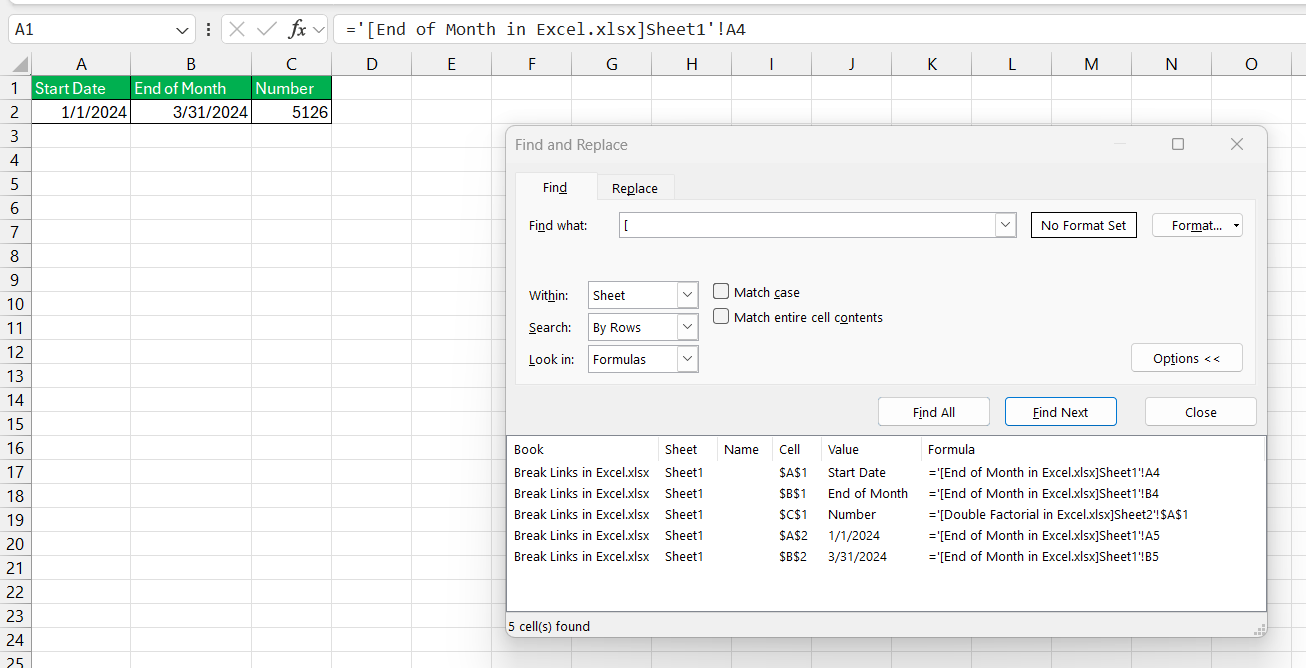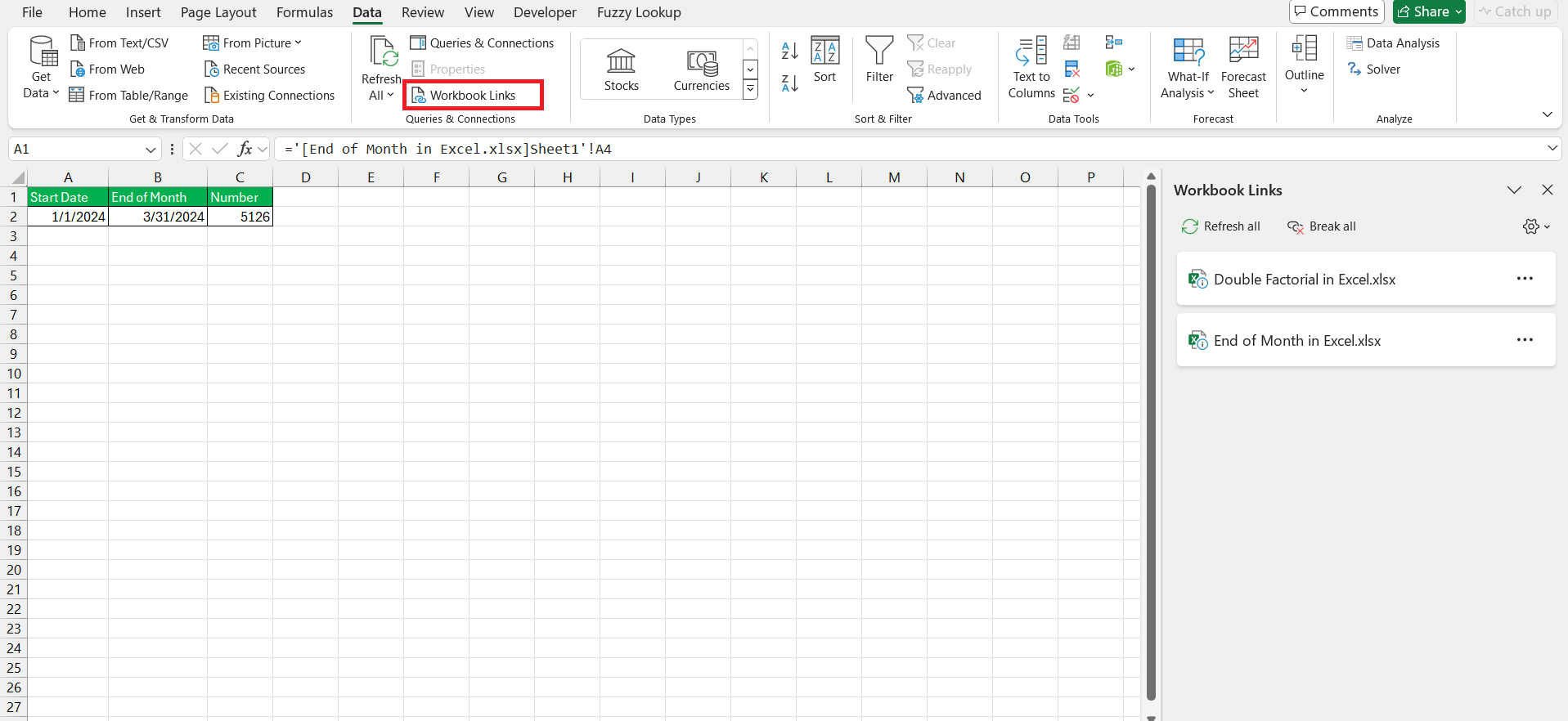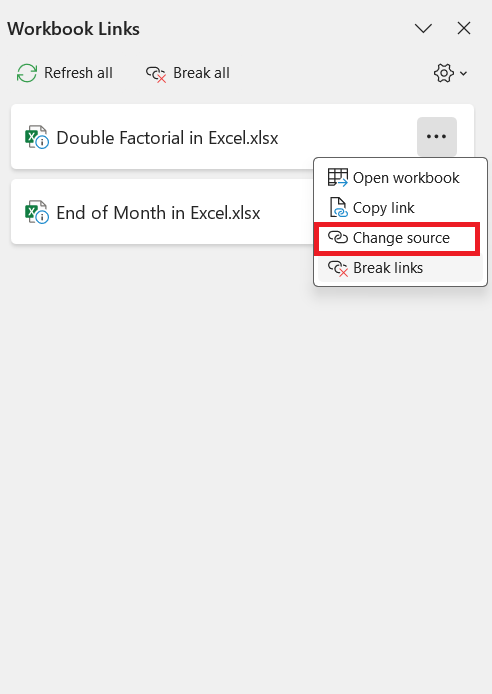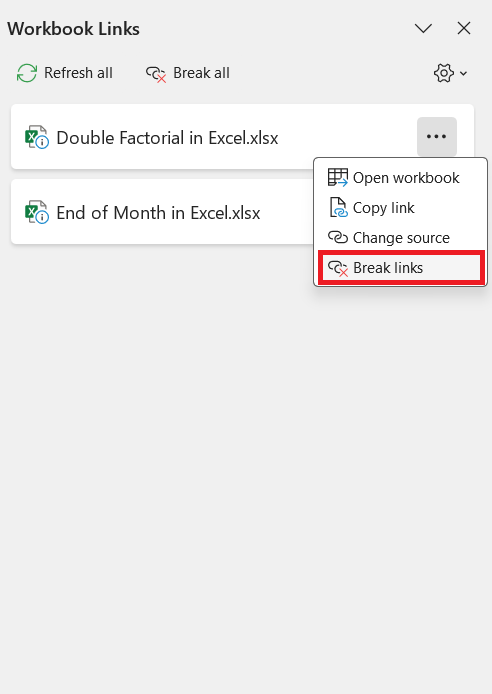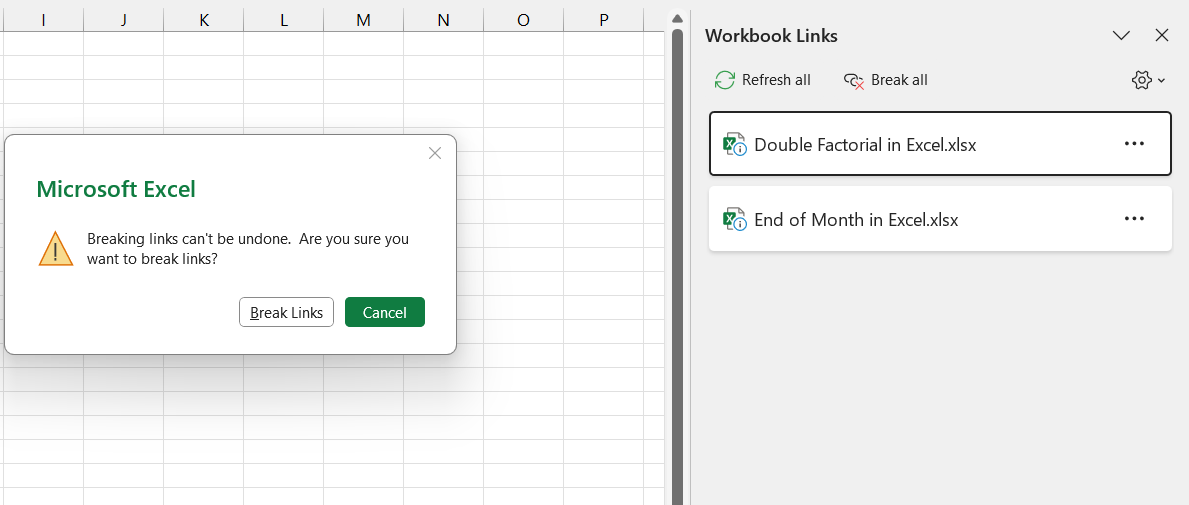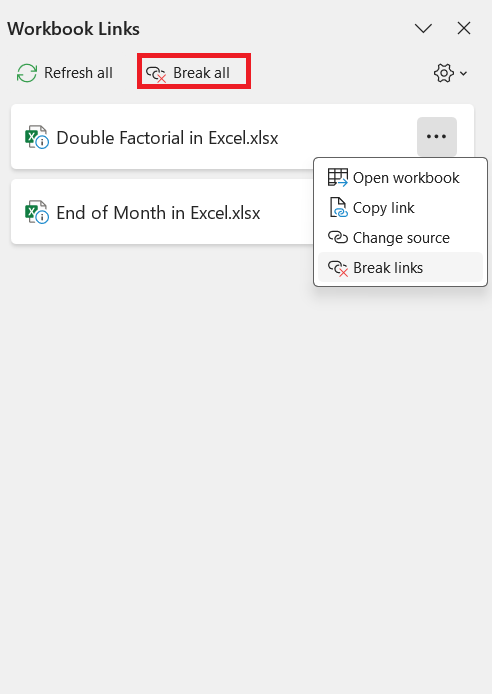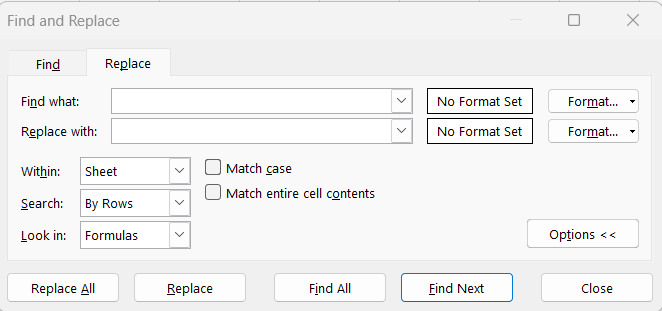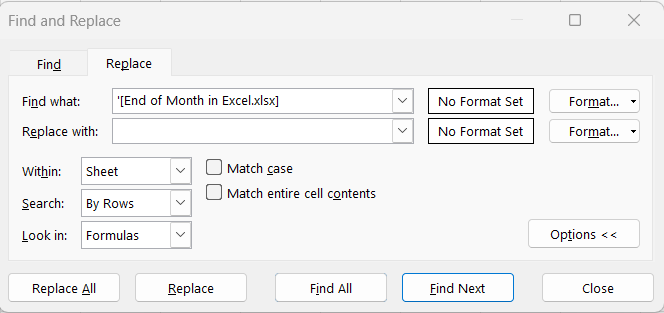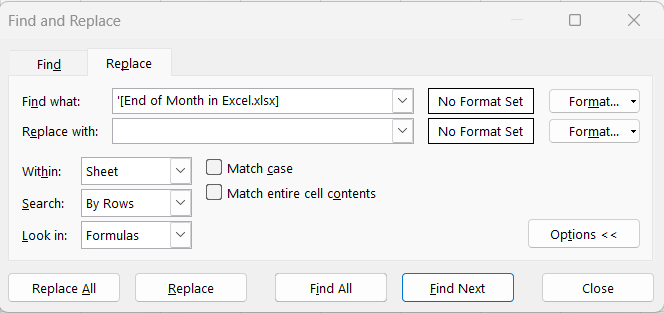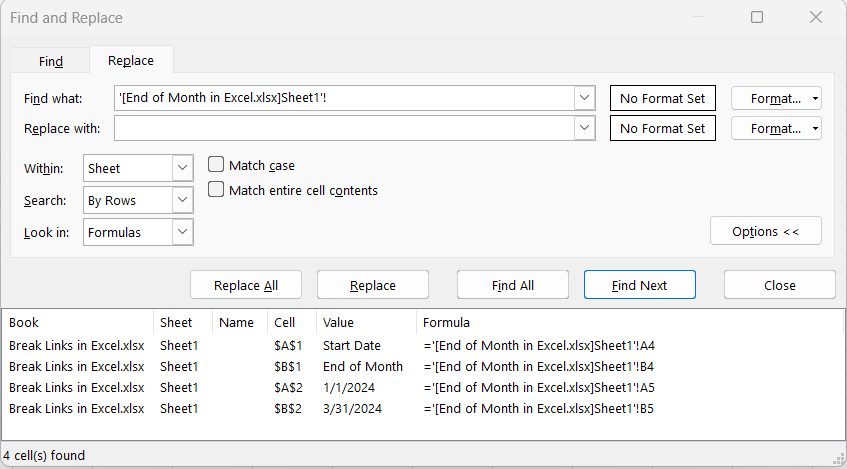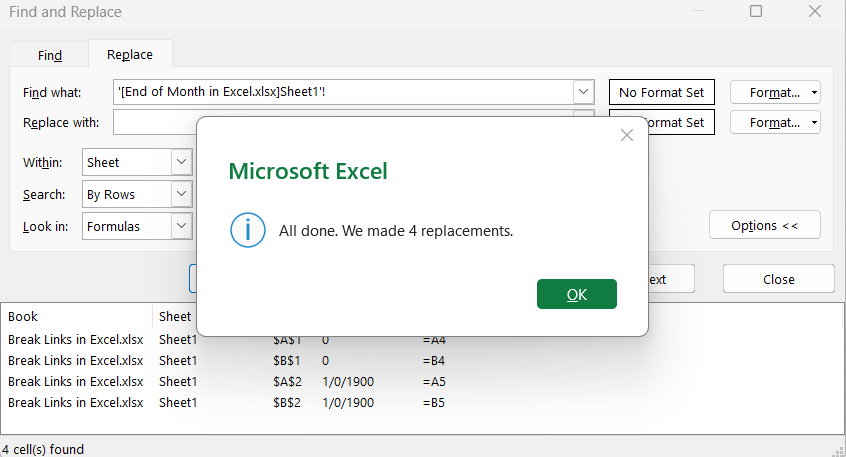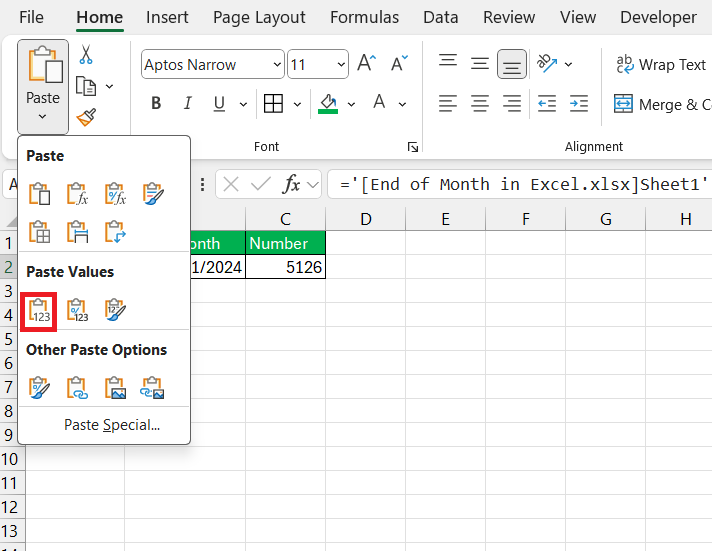In this article, I’m going to walk you through the process of breaking links in Excel, a crucial skill when you want to ensure your spreadsheets are self-contained and free from external dependencies. Whether you’re dealing with a complex workbook or just want to clean up your data, I’ll show you how to break lines in Excel and keep your files running smoothly.
Key Takeaways:
- Introduction to Breaking Links: Learn why breaking external links is essential for data integrity and performance in Excel.
- Identifying External Links: Use features like ‘Find and Replace’ and ‘Workbook Links’ to detect and manage external references across your workbook.
- Steps to Break Links: Follow straightforward steps to break or update links via the Workbook Links dialog box or the Find & Replace option.
- Preserving Data Integrity: Replace formulas with static values to maintain data accuracy and avoid dependency on external sources.
- Best Practices for Interlinked Files: Organize and document interlinked files carefully to ensure clarity and avoid issues with data connections.
Table of Contents
Introduction to Break Links in Excel
Understanding the Need to Remove External References
When we delve into the sophistication of Excel, removing external references becomes a paramount task for ensuring data security and workbook functionality. External references, or links, can lead to external files or data sources, which, if altered or deleted, could affect the reliability of the Excel workbook.
It’s not just about data integrity, though; removing these links also results in a performance boost, as Excel no longer needs to update them.
When and Why to Manage Workbook Links
Managing workbook links is a critical step we usually undertake when the linked data is no longer needed or when the source file is inaccessible. It’s essential to break links to prevent potential errors and to ensure that your workbook remains self-contained and portable. You may also want to break links before sharing the document, to protect sensitive data, or simply to clean up and streamline the workbook.
Remember, much like managing updates on our smartphones or computers, keeping track of these links optimizes the performance and reliability of our Excel files. It’s about staying in control of your data ecosystem and ensuring everything runs like a well-oiled machine—with no unpleasant surprises in the form of broken links or outdated information.
Identifying External Links in Excel
Methods to Discover Links in Various Excel Components
Spotting external links across the different components of Excel, such as data ranges, charts, or even embedded objects, is akin to detective work. We often use the ‘Find and Replace’ feature by searching for the left bracket ‘[‘ to unearth hidden links within formulas.
The ‘Workbook Links’ feature under the ‘Data’ tab is another go-to method, acting as a control panel to view and manage these external connections more transparently.
Steps to Break Links in Excel
Using the Workbook Links Dialog Box Effectively
Managing links to external workbooks is helpful, especially when I want to avoid dealing with broken links or unnecessary data connections. Whether I need to update a link to a new source or break it entirely to keep the current data, the process is straightforward. Here’s how I go about editing or breaking links in my workbook:
Steps to Edit or Break Links in Excel 365:
STEP 1: Start by opening my workbook and going to the Data tab on the ribbon.
STEP 2: In the Queries & Connections group, I click on Workbook Links. This opens the Workbook Links dialog box, showing all external links in the workbook.
STEP 3: If I want to edit a link, I select the one I need to change and click Change Source to update it with a new file or location.
STEP 4: If I want to break a link, I select the link and click Break Link.
STEP 5: Excel asks me to confirm since breaking the link is permanent. I then click Break Links to finalize it, and now the link is gone—replaced by the current value from the external source.
If you wish to break all links at one go, simply click on ‘Break All’.
Using Find & Replace Option
If you want to break links using the Find & Replace option in Excel, here’s how you can do it:
STEP 1: Open your workbook and press Ctrl + H to open the Find & Replace dialog box.
STEP 2: In the Find what field, enter the part of the external link you want to remove. This is usually a file path or workbook name that appears in your formulas.
STEP 3: In the Replace with field, leave it blank if you want to remove the external reference but keep the formula, or enter a value if you want to replace the link with a specific number or text.
STEP 4: Click Find All to review where the links are located. This helps ensure you are replacing the correct references.
STEP 5: Click Replace All to remove or replace the external links across the entire workbook.
Review your workbook to ensure that all links have been correctly removed or replaced, and verify that the formulas are working as expected with the new values or without external references.
Managing External Links Without Data Loss
Refreshing and Updating Existing Links
Refreshing and updating existing links in Excel are vital maneuvers in the data management playbook. Imagine I am updating my records with the latest figures; what I’d typically do is head over to the Workbook Links pane, which is conveniently accessed via Data > Queries and Connections.
Within this pane lies the capacity to ensure my data is as current as possible with the ‘Refresh All’ option—an espresso shot for lagging data.
Replacing Formulas with Static Values to Preserve Data Integrity
When it comes to safeguarding data integrity in Excel, replacing formulas with their static values is a definitive measure we often take. I typically press Ctrl+C to copy the cell with the formula, followed by the sequence Alt+E+S+V, which is the shortcut to paste the formula as its value. Alternatively, navigating to the Home tab, then to Clipboard, and finally to Paste > Paste Values, achieves the same effect with a few more clicks.
This operation removes the underlying formula and replaces it with the current value, freezing the data in time, much like a snapshot captures a moment. If, however, I commit an error and hastily convert a formula to a value, the swift strike of Ctrl+Z (undo) is my savior, rolling back the action as if it never occurred.
Employing this practice imparts a layer of finality to my data, ensuring that once I sever the ties to a fluctuating formula, the value remains constant, immune to the ripple effects of external changes.
Best Practices for Creating Interlinked Excel Files
When creating interlinked Excel files, planning and organization are everything—it’s about building a network of files that communicate effectively. I start with a meticulous approach, saving the source files in a central, shared location that is accessible to all pertinent workbooks. Consistent naming conventions and file paths help prevent confusion as the groundwork for smooth link functionality.
Before crafting a single formula, I set up clear documentation, outlining which files link to where and why, rather like creating a map before embarking on a journey. For the sake of transparency and collaboration, my philosophy is simple: any colleague should be able to pick up where I’ve left off without getting lost in a maze of data.
With data protection always in mind, I consider whether to use absolute or relative references for each interconnection, carefully evaluating the future movements of my workbooks. Absolute links don’t adjust if I move my files around, while relative links can be versatile companions, adjusting path information based on the location of the linked workbook.
FAQs
What is the shortcut key to break links in Excel?
Unfortunately, there’s no direct shortcut key to break links in Excel. We need to access the ‘Edit Links’ dialog box by navigating through the Data tab. Once there, we select the specific links to break and click the ‘Break Link’ button. It’s a manual process, but an efficient one once you get to that point.
Can I break links without affecting my calculations?
Yes, you can break links without affecting calculations by first ensuring that the data extracted from the link is no longer needed or by replacing the formulas with their static values before breaking the links. This way, your calculations remain intact but independent from the original source.
How do I update links in Excel without receiving constant prompts?
To update links without constant prompts, go to File > Options > Trust Center > Trust Center Settings > External Content, and select ‘Enable automatic update for all Workbook Links’. This means Excel will refresh links automatically without nudging you each time the workbook is opened.
What should I do if I cannot find the source of a mysterious external link?
If you cannot locate the source of a mysterious external link, comb through all named ranges, chart data series, conditional formatting, data validation rules, and objects with assigned macros. If the link still lurks unseen, consider using a specialized add-in to search for hidden links or engage in a VBA macro that’s designed to hunt down and reveal elusive links.
How do I break all hyperlinks in Excel?
To break all hyperlinks in Excel, try selecting all the cells containing hyperlinks, right-click, and choose ‘Remove Hyperlinks’. If they’re scattered throughout the workbook, use the ‘Go To Special’ feature under ‘Find & Select’ in the Home tab to select all hyperlinks at once, and then remove them.
John Michaloudis is a former accountant and finance analyst at General Electric, a Microsoft MVP since 2020, an Amazon #1 bestselling author of 4 Microsoft Excel books and teacher of Microsoft Excel & Office over at his flagship MyExcelOnline Academy Online Course.

